Underwater Wonders: 10 Captivating Realities of the Galapagos Marine Iguana
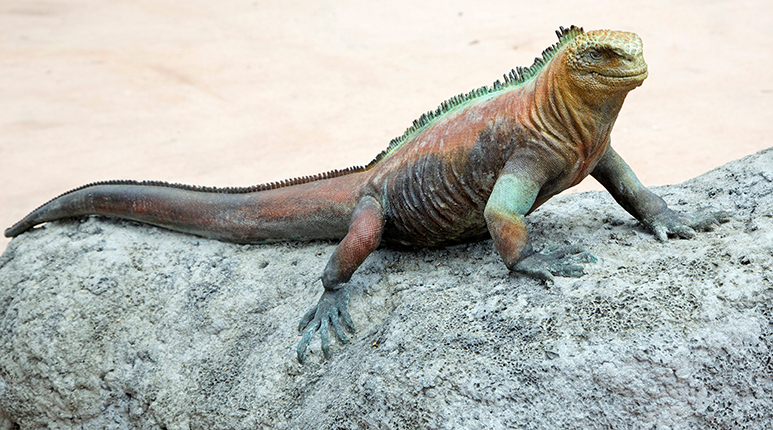
Introduction
Overview of the Galapagos Marine Iguana
The Galapagos Marine Iguana is a truly unique creature, with its ability to thrive in the harsh, salty environment of the Galapagos Islands. As the only sea-going lizard in the world, it has adapted remarkably to life on the islands. These iguanas can be found basking on rocks, absorbing the sun’s heat after a long day of foraging in the ocean.
They are known for their distinctive dark, scaly skin, which helps them regulate their body temperature and blend seamlessly into the rocky surroundings. These remarkable reptiles have developed a diet primarily consisting of algae, which they scrape off underwater rocks. Their elongated body and flattened tails allow them to swim efficiently, showcasing an impressive level of adaptability.
Significance of the Species
The significance of the Galapagos Marine Iguana extends beyond its unique adaptations. These lizards play a crucial role in their ecosystem by:
- Maintaining algal populations, which prevents overgrowth and supports biodiversity.
- Serving as a food source for various predators, including hawks and sea lions.
Furthermore, they are a symbol of the Galapagos Islands’ rich biodiversity and are integral to understanding the processes of evolution. Their existence fuels scientific research and ecotourism, helping raise awareness about the importance of preserving these beautiful islands and their inhabitants. The Galapagos Marine Iguana is not just a captivating species; it represents a vital part of the delicate balance of life in the Galapagos.

Evolution and Adaptation
Unique Evolutionary Traits
The evolution of the Galapagos Marine Iguana is a fascinating tale of survival and adaptation. Unlike their terrestrial relatives, these iguanas have developed unique traits over thousands of years, enabling them to thrive in an environment that would be hostile to most reptiles.
A standout feature is their ability to regulate body temperature through basking. By absorbing sunlight on rocky shores, they effectively warm up before taking the plunge into colder waters. Some key evolutionary traits include:
- Flattened Bodies: Their sleek bodies help reduce drag while swimming, showcasing an effective design for life both on land and in water.
- Long, Strong Tails: These tails act like paddles, enabling better swimming abilities when searching for food.
Adaptations to Marine Life
The adaptations of the Galapagos Marine Iguana go beyond physical traits. These reptiles exhibit remarkable behavioural modifications that complement their marine lifestyle.
- Salt Excretion: One of the most impressive adaptations is their capacity to expel excess salt through specialized glands in their noses. This unique mechanism allows them to thrive on a diet of algae while avoiding dehydration.
- Social Behaviour: Marine Iguanas exhibit fascinating social structures, often basking in large groups to optimize warmth and provide safety from predators.
These incredible adaptations not only highlight the resilience of the Galapagos Marine Iguana but also serve as a reminder of the delicate balance of nature. Their ongoing evolution emphasizes the importance of protecting their habitat to ensure their survival and the health of the surrounding ecosystem.
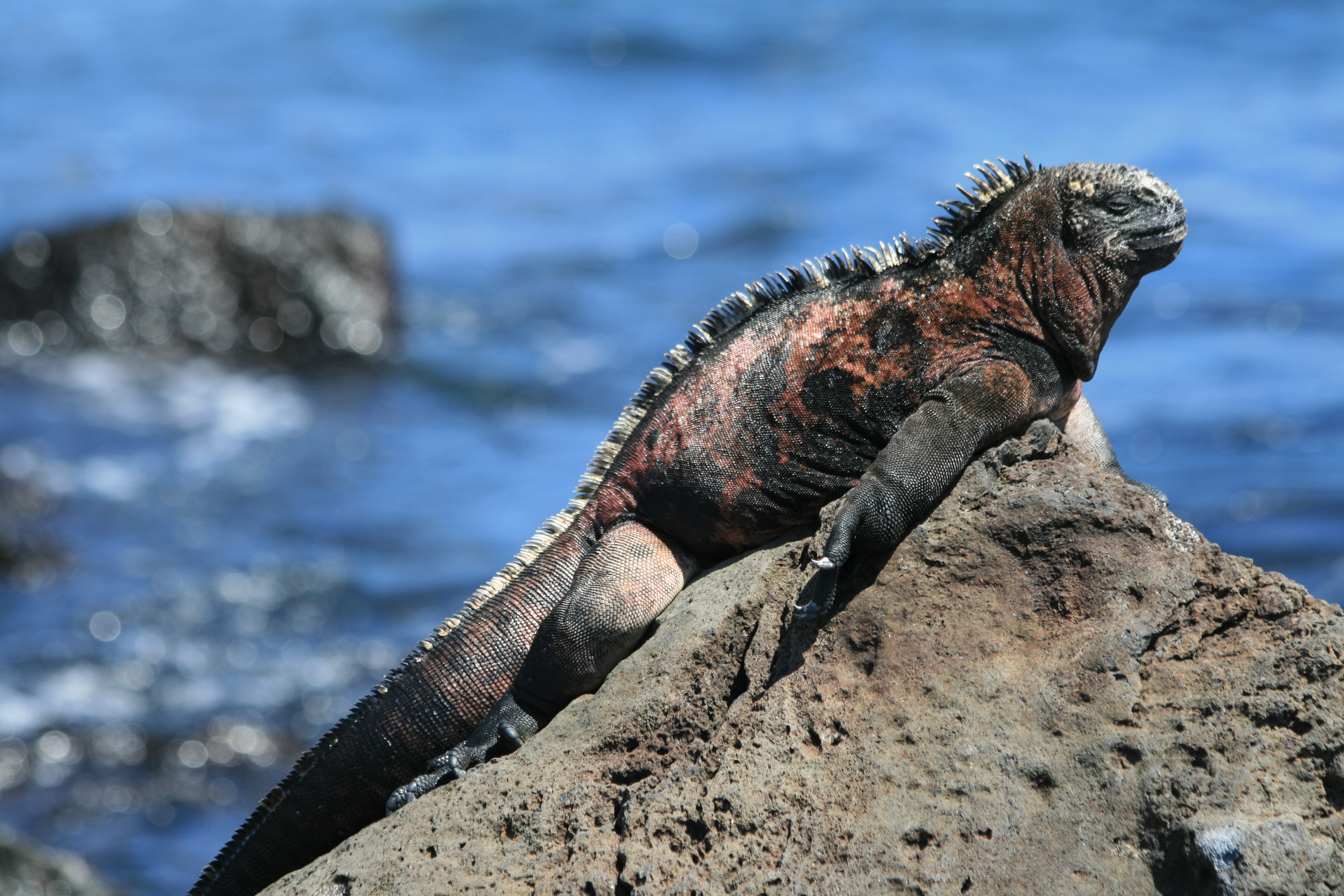
Habitat and Distribution
Ecological Role in the Galapagos Islands
The Galapagos Marine Iguana is more than just a fascinating reptile; it plays a vital ecological role within the unique ecosystem of the Galapagos Islands. By primarily feeding on marine algae, these iguanas contribute to controlling algal growth in their habitats. This action indirectly promotes the health of other marine species, as excess algae can inhibit the growth of seagrass and coral reefs. Some key ecological contributions include:
- Algal Grazers: By consuming algae, they help maintain a balanced underwater ecosystem, preventing monopolization of resources by a single plant species.
- Nutrient Cycling: Their droppings provide essential nutrients back to both terrestrial and marine environments, supporting a diverse range of life forms.
Distribution Across the Archipelago
The Galapagos Marine Iguana can be found throughout several islands in the archipelago, each with its distinct population dynamics. They thrive predominantly on rocky shorelines, where they can easily access both sun and surf.
- Island Variability: You'll find the largest populations on islands like Española, Fernandina, and Isabela. These locations provide abundant foraging opportunities along the coastlines.
- Habitat Preferences: They prefer areas with abundant algae and suitable basking spots, illustrating their dependence on specific environmental conditions.
This geographical distribution is a testament to their adaptability, allowing them to occupy various niches within the unique habitat of the Galapagos. Protecting these islands is essential not only for the survival of the Marine Iguana but also for the overall health of the archipelago's marine and terrestrial ecosystems.
Feeding Behaviour
Diet Composition
The Galapagos Marine Iguana has a specialized diet that largely revolves around marine algae, making it one of the few lizards in the world to thrive on a predominantly aquatic diet. Their meals primarily consist of:
- Green Algae: The most common type consumed, providing essential nutrients and energy.
- Red Algae: Found in the intertidal zone, it adds variety to their diet.
- Brown Algae: Occasionally consumed, especially when other food sources are scarce.
Interestingly, these iguanas have adapted to efficiently scrape and consume their primary food through the use of their sharp teeth. This dietary preference has evolved in tandem with the unique environmental challenges of the Galapagos, highlighting their intricate relationship with marine ecosystems.
Foraging Strategies
When it comes to foraging, Galapagos Marine Iguanas exhibit fascinating strategies that showcase their adaptability. They typically forage in the early morning or late afternoon to avoid the heat of the day, which can be particularly intense on the rocky coastlines. Their foraging methods include:
- Diving: They can hold their breath for up to an hour while diving up to 30 feet underwater to access rich patches of algae.
- Scraping: Upon resurfacing, they utilize their sharp claws to scrape algae off the rocks efficiently, demonstrating their specialized anatomy in action.
This combination of behaviours ensures that they can maximize their food intake in the nutrient-rich waters of the Galapagos. As every feeding session is a balance of energy expended versus energy gained, the Marine Iguana's foraging strategies are essential for their survival—allowing them to thrive in one of the planet's most unique ecosystems.
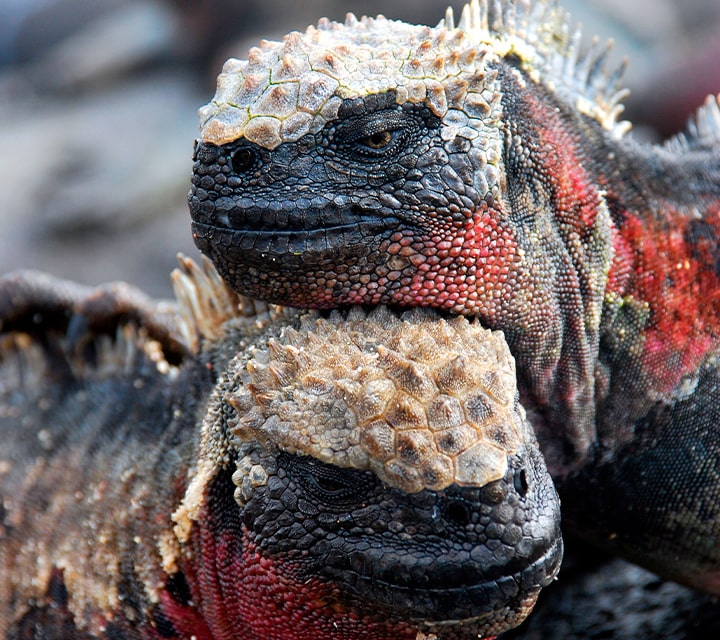
Reproduction and Life Cycle
Mating Rituals
The reproduction of the Galapagos Marine Iguana is a captivating process filled with unique mating rituals. During the breeding season, typically from December to April, male iguanas engage in elaborate displays to attract females. These displays include:
- Head Bobbing: Males perform head-bobbing movements to demonstrate their vigour and dominance.
- Colour Changes: Their skin may change to brighter hues, signalling readiness for mating and enhancing their attractiveness to females.
Once a male successfully captures a female's attention, he may pursue her, continuing to show off his physical prowess through impressive posturing and movements. Courtship can be quite competitive, as multiple males often vie for the same female's attention.
Nesting and Hatching Process
After mating, the female Galapagos Marine Iguana lays her eggs in a carefully chosen nesting site, usually in sandy or loose soil that allows for easy excavation. She can lay up to 6–20 eggs per clutch, depending on her size and health.
- Incubation: The incubation period lasts about 2 to 4 months, during which the female does not stay with her eggs. Instead, she leaves them to develop on their own. This independence is crucial, as it reduces the risk of predation.
When the eggs hatch, the tiny iguanas emerge and instinctively make their way to the ocean. This remarkable journey is filled with challenges, as they must avoid predators.
However, those who survive will begin their life in the rich waters of the Galapagos, ultimately continuing the cycle of life for this fascinating species. This entire reproduction process not only signifies the resilience of the Marine Iguana but also highlights the delicate balance of their ecosystem.
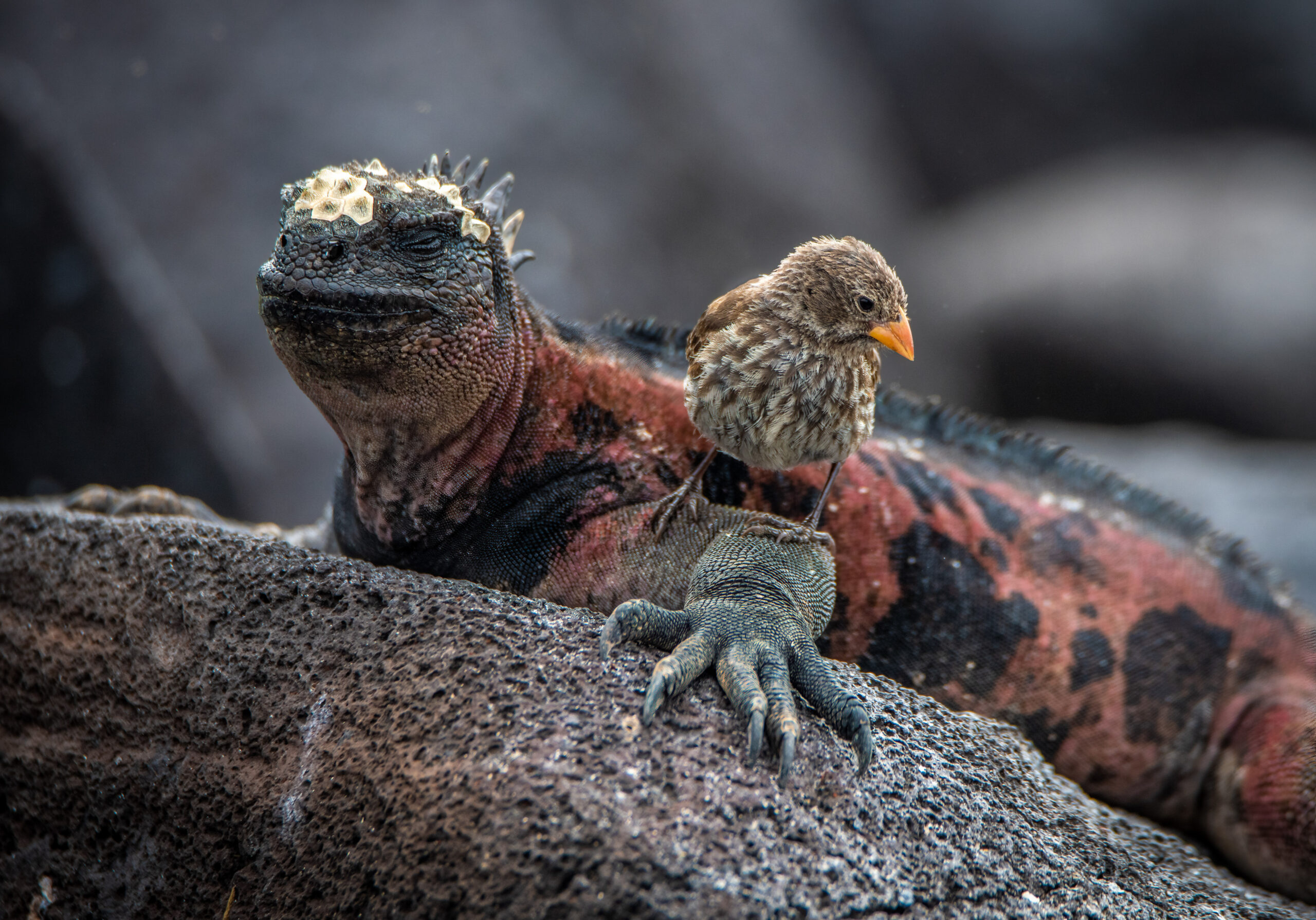
Conservation Status
Threats to Population
Despite their unique adaptations and ecological significance, the Galapagos Marine Iguana faces several threats that jeopardize its population. These threats are largely human-induced and environmental, including:
- Invasive Species: Non-native plants and animals compete with iguanas for resources, disrupting their habitats and feeding grounds.
- Climate Change: Rising sea temperatures and altered weather patterns negatively impact food availability, particularly algae, which is integral to their diet.
- Human Activities: Increased tourist activity and urban development can lead to habitat destruction and direct disturbances in their breeding grounds.
These challenges place stress on the Marine Iguana population, emphasizing the need for effective conservation measures.
Conservation Efforts
Recognizing the plight of this remarkable species, local authorities and wildlife organizations have put various conservation efforts in place. Key initiatives include:
- Protected Areas: Establishing marine reserves and national parks helps safeguard critical habitats from human encroachment.
- Invasive Species Control: Programs to monitor and manage invasive species aim to restore balance within the ecosystem.
- Public Education: Raising awareness among tourists and locals about the importance of protecting Marine Iguanas fosters a culture of conservation.
These collaborative efforts are vital for ensuring the survival of the Galapagos Marine Iguana. By emphasizing the importance of these reptiles, we highlight the need to protect the intricate ecosystems of the Galapagos Islands. After all, the fate of the Marine Iguana is intricately linked to the health of their environment and the balance of life within these extraordinary islands.
Behaviour and Social Structure
Social Interactions
The social dynamics of the Galapagos Marine Iguana are quite fascinating and reveal a unique aspect of their behavior. Unlike many reptiles that are primarily solitary, these iguanas exhibit social interactions that play a crucial role in their survival. During the breeding season, you can observe a complex hierarchy among males as they establish dominance through displays of strength and aggression. Some interesting social behaviours include:
- Basking Socially: You'll often spot groups of iguanas basking together on the rocky shores. This social basking is not just about warmth; it provides protection from predators.
- Territorial Displays: Males often engage in neck bobbing and posturing to establish their territories, showcasing their physical fitness to potential mates.
Behavioural Patterns
In addition to its social structures, the Galapagos Marine Iguana exhibits distinct behavioural patterns that contribute to their adaptability. These patterns include:
- Foraging Flexibility: Depending on food availability, they can adjust their foraging habits, diving shallowly or deeply to find algae.
- Seasonal Breeding: Their breeding behaviour is synchronized with environmental cues, which helps ensure that hatchlings emerge during times of optimal food availability.
Their ability to adapt their behaviour not only aids in survival but also strengthens their social bonds within populations. Observing a group of Marine Iguanas, with their mix of individuality and cohesion, offers a window into the intricate balance of life in the Galapagos, reminding us of the interconnectedness of species and their shared existence in this remarkable ecosystem.

Size and Physical Characteristics
Average Size and Weight
The Galapagos Marine Iguana boasts impressive size and weight ranges that reflect their adaptability to the island environment. Generally, these intriguing reptiles measure around 3 to 4 feet long, making them one of the largest iguana species. When it comes to weight, they typically range from 11 to 30 pounds, with males often being larger than females.
- Size Variation: The size can vary depending on the island, with some populations on smaller islands being noticeably smaller due to differing environmental pressures.
- Growth Patterns: Younger iguanas tend to grow rapidly during their first few years, particularly if food is abundant, demonstrating how resilient these creatures are.
Unique Physical Features
The physical characteristics of the Galapagos Marine Iguana are not just striking; they are tailored to enhance their survival. Some of the most notable features include:
- Flattened Snouts: These allow the iguanas to efficiently forage for algae and other marine plants while submerged.
- Spiky Dorsal Fin: A distinctive feature, this fin aids in maintaining stability while swimming and resembles the look of mini 'sails' when lying on rocky shores.
- Camouflaged Skin: Their dark, scaly skin helps them blend into the volcanic rocks, providing protection from both predators and the sun’s harsh rays.
With these unique adaptations, the Galapagos Marine Iguana stands as a testament to the evolutionary marvels present in the Galapagos Islands. Each characteristic not only enhances their survival but also contributes to the fascinating biodiversity that makes the archipelago so special. Through understanding their physical traits, we gain insight into how these remarkable reptiles continue to thrive in their unique environment.

Predators and Defense Mechanisms
Natural Predators
The Galapagos Marine Iguana, while fascinating and well-adapted to its marine environment, faces various natural predators that challenge its survival. Some of the notable predators include:
- Hawks: These birds of prey are skilled hunters, often swooping down to target young or less vigilant iguanas basking on the shore.
- Sea Lions: Curious and playful, sea lions may sometimes view iguanas as potential playmates or even food, particularly juveniles.
- Snakes: While not as common, the introduction of snakes to some islands poses a threat, especially to nesting females and young hatchlings.
These threats emphasize the delicate balance of life in the Galapagos, where each species plays a role in the ecosystem.
Defense Tactics
To survive amidst these threats, the Galapagos Marine Iguana has developed a range of effective defence tactics. These include:
- Camouflage: Their dark skin helps them blend into the rocky environment, making it difficult for predators to spot them.
- Swimming Agility: When threatened, iguanas can quickly dive into the water, escaping with impressive speed and dexterity. They can hold their breath underwater for extended periods, allowing them to evade danger until it’s safe to surface.
- Basking Behaviour: By basking socially with other iguanas, they also enhance their chances of survival. The presence of many iguanas can deter predators through sheer numbers.
These defense mechanisms illustrate the incredible adaptations that the Galapagos Marine Iguana has evolved over time. Understanding these traits allows us to appreciate the resilience of this species and the need for ongoing conservation efforts to protect them against their natural predators. The survival of each iguana enriches the vibrant tapestry of life found in the stunning Galapagos Islands.
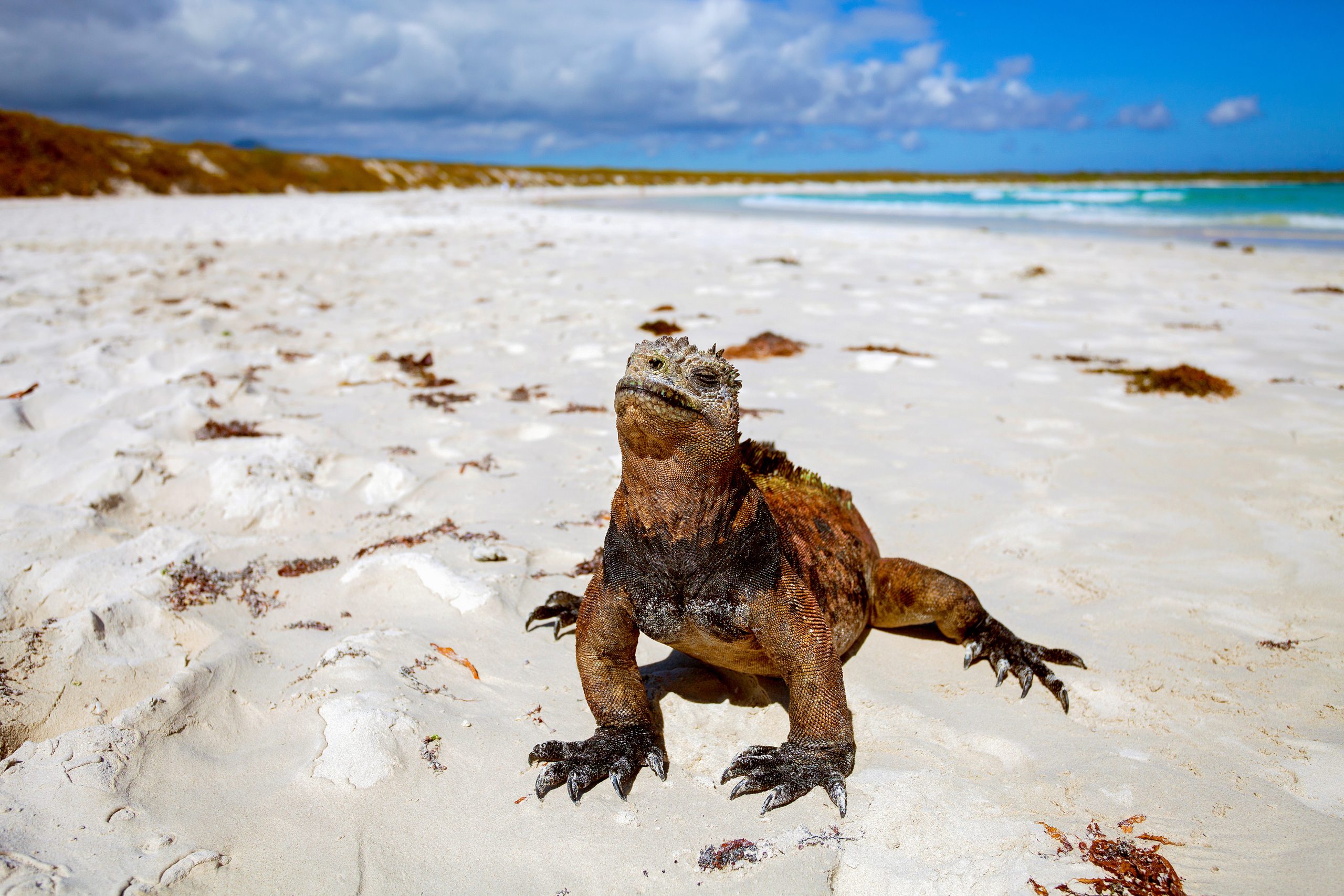
Human Interaction and Ecotourism
Impact of Tourism
As one of the most sought-after destinations for nature enthusiasts, the Galapagos Islands attract a significant number of tourists each year. While this influx of visitors can benefit the local economy and promote conservation awareness, it can also pose challenges to the delicate ecosystems, including that of the Galapagos Marine Iguana. The positive impacts of tourism include:
- Funding Conservation: Entrance fees to national parks contribute directly to conservation programs, aiding in habitat protection.
- Increased Awareness: Education initiatives help tourists understand the importance of preserving biodiversity and maintaining ecological balance.
However, the drawbacks shouldn't be overlooked:
- Disturbance to Wildlife: Frequent human interactions can lead to stress for the Marine Iguana, especially during nesting periods.
- Habitat Degradation: Overexploitation of resources and littering can disrupt their natural habitats.
Best Practices for Wildlife Encounters
To ensure that our love for the Galapagos doesn’t come at the expense of its unique wildlife, it is essential to adopt responsible tourism practices. Here are some best practices:
- Maintain Distance: Always observe iguanas from a distance; getting too close can cause unnecessary stress.
- Stay on Designated Paths: This helps to minimize habitat disruption and preserve the delicate ecosystems where these creatures thrive.
- Do Not Feed Wildlife: Feeding iguanas alters their natural behaviours and diets, impacting their health and survival.
By following these guidelines, we can enjoy unforgettable encounters with the Galapagos Marine Iguana while ensuring that future generations can experience the wonders of this remarkable species. Responsible tourism is key to preserving the rich biodiversity of the Galapagos Islands, enabling a harmonious coexistence between humans and the extraordinary wildlife that calls this place home.
